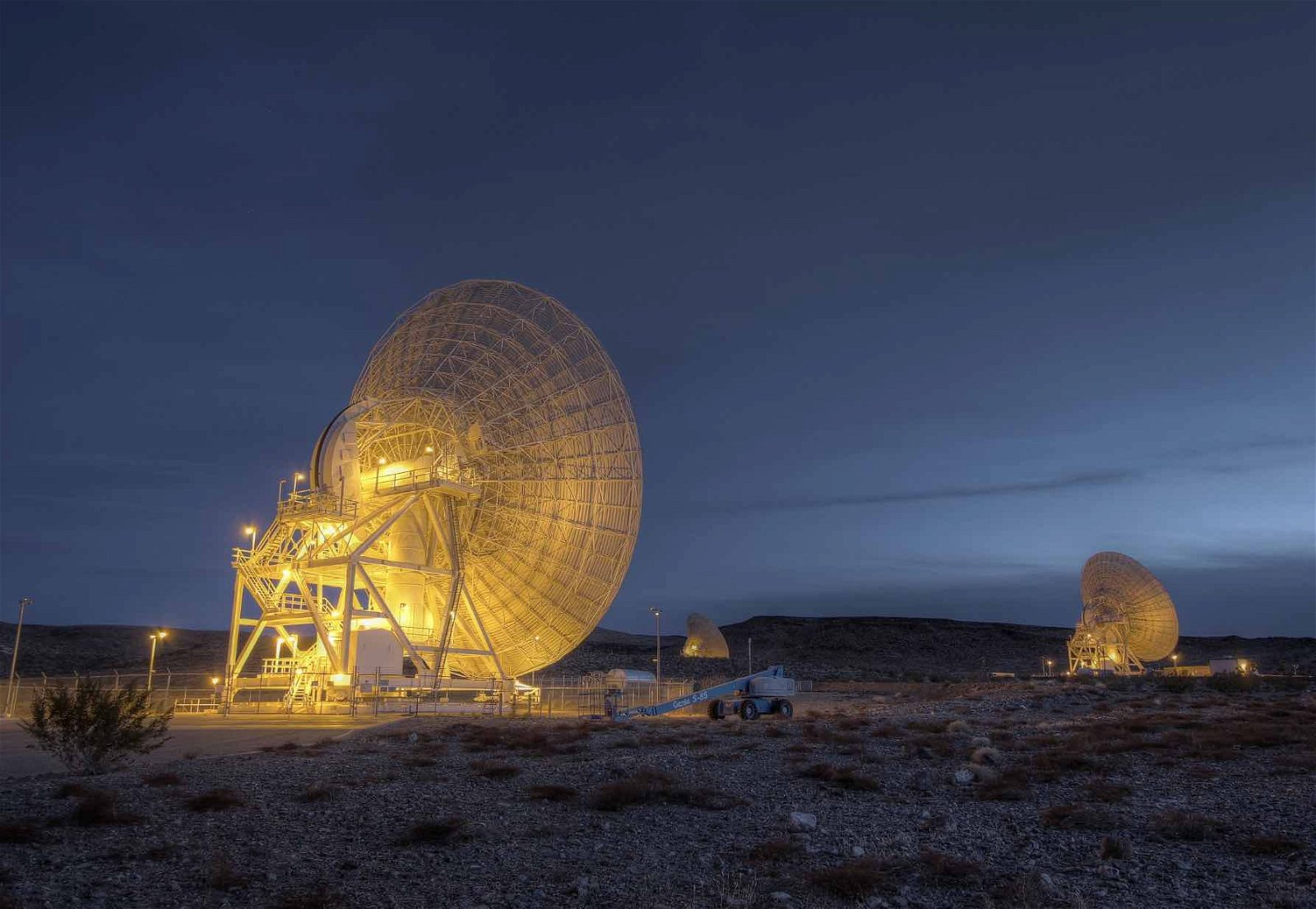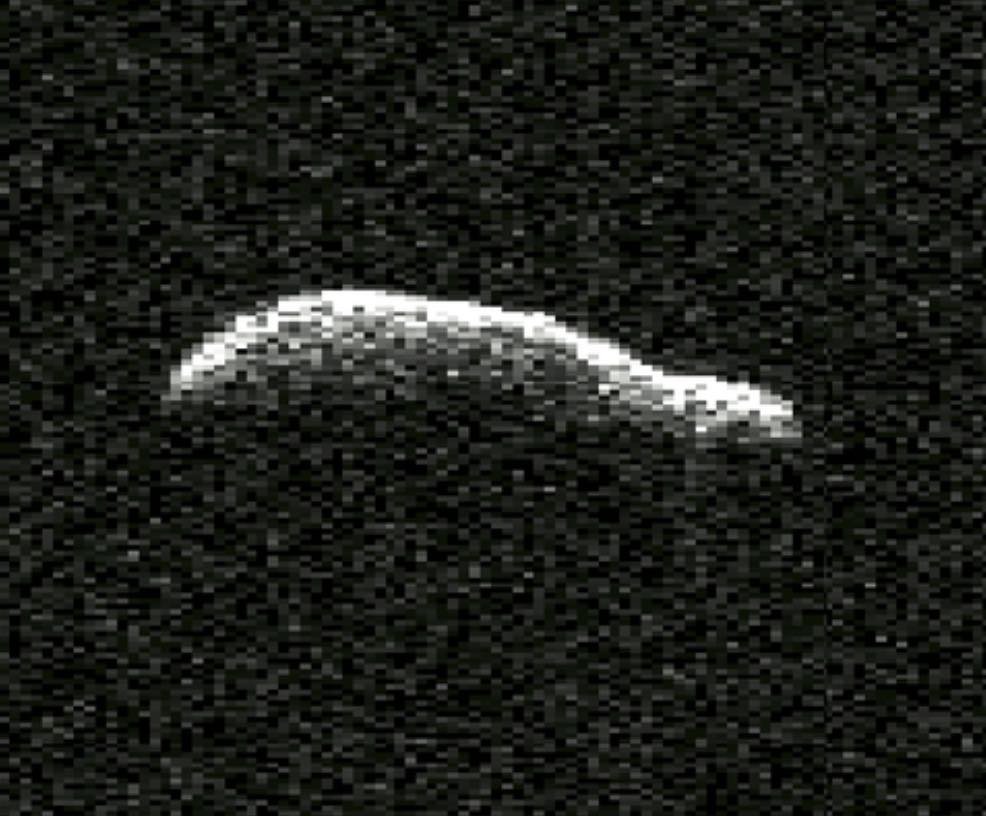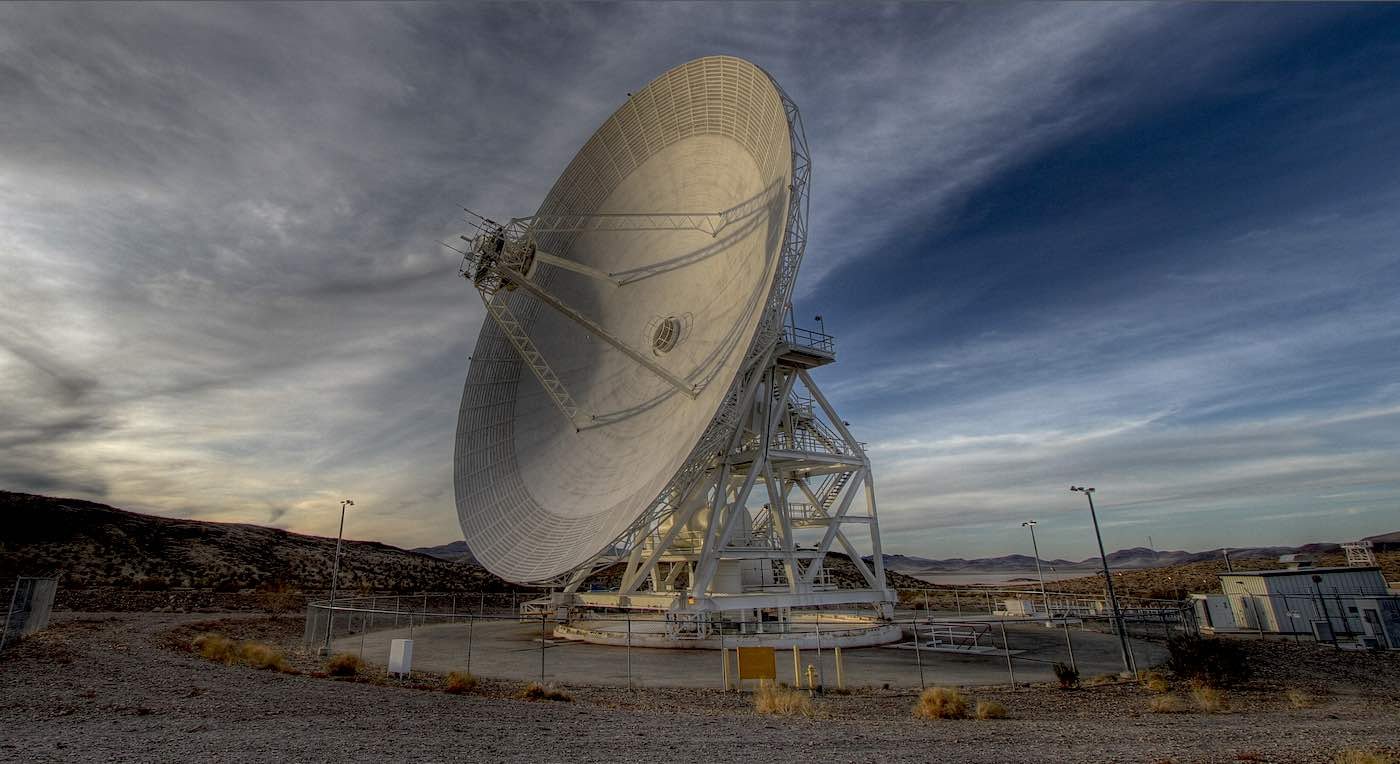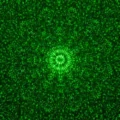NASA officials say an unusually shaped oblong object was recently tracked by the space agency’s Deep Space Network as it made a close approach near Earth earlier this month.
The Deep Space Network consists of a network of spacecraft communication facilities operated by the U.S. from various points around the globe. With locations in North America, Europe, and Australia, the Deep Space Network is able to conduct astronomy via radio and radar observations while contributing to several of NASA’s orbital missions.
On February 3, the network detected an odd, roughly pill-shaped object with a length close to three times that of its width, approaching Earth at just under five times the distance between Earth and the Moon.
The curiously shaped object was described as one of the “most elongated asteroids ever imaged by planetary radar,” according to a statement that appeared on the website of NASA’s Jet Propulsion Laboratory in Pasadena, California.
Dubbed 2011 AG5, the object was deemed to be no risk to Earth, although JPL scientists reportedly “closely tracked the object” in an effort to learn as much as they could about its elongated shape, as well as its size, rotation, and other details.
Although the near-Earth transit in February allowed JPL scientists an ideal opportunity to observe the object, it is among the many known space objects NASA has logged and continues to track, having been first discovered twelve years ago.
“This close approach provided the first opportunity to take a detailed look at the asteroid since it was discovered in 2011,” read a JPL statement, which revealed the object to be roughly the same size and dimensions as the Empire State Building at approximately 1,600 feet long and 500 feet wide.


The object’s dimensions and other characteristics were determined with help from the powerful Goldstone Solar System Radar antenna dish, located at Barstow, California, which remains active 24 hours each day in their effort to collect data about asteroids and other objects, some of which are as distant as the edges of our Solar System. Goldstone’s antennas are also capable of performing a dual purpose as radio telescopes useful in the study of planets and other celestial objects that produce radio waves.
Lance Benner, principal scientist at JPL and one of the scientists that led the observations of 2011 AG5, said in a statement that it is “one of the most elongated we’ve seen.”
Past research has suggested that asteroids bearing an elongated shape may be younger, as it is believed that impacts that occur over lengthier periods of an asteroid’s lifespan may produce their more common spherical shapes.
NASA says the observations of 2011 AG5 began as early as January 29 and lasted until February 4, 2023. During this period, JPL scientists managed to discern several additional details about the ovoid asteroid that included a broad concavity in one of the object’s hemispheres.


JPL astronomers were also able to detect areas on the surface of the asteroid where variances in its coloration and albedo appeared to convey differences in surface features on the object, revealed in part as the object slowly spins over the course of rotational periods that require close to nine hours to complete a full revolution.
So what do we learn from these observations of asteroid 2011 AG5? Thanks to the measurements collected by the Goldstone radar, JPL scientists were also able to determine a wealth of new information about the object’s orbit around the Sun. This is significant because it provides measurements that allow scientists with NASA’s Center for Near Earth Object Studies to better understand its 621-day orbit around the sun, which means that the next close encounter Earth has with the object won’t occur for another seven years.
In the past, 2011 AG5 had once been considered a potential threat to Earth due to the close pass the object is expected to make in 2040. However, an analysis of data collected in 2012 by NASA’s Near-Earth Object Program Office helped qualm those concerns.
“The updated trajectory of 2011 AG5 is not significantly different, but the new observations have reduced the orbit uncertainties by more than a factor of 60,” read a statement on the CNEOS website, “meaning that the Earth’s position in February 2040 no longer falls within the range of possible future paths for the asteroid.”
At that time, although 2011 AG5 will be closer than its most recent pass, the object will still be at a distance of 670,000 miles from Earth at its nearest approach, which amounts to about three times the distance of the Moon.
“Continued observations of this object ruled out any chance of impact,” according to CNEOS director Paul Chodas.
To date, JPL says that there are 1,040 near-Earth objects that have been observed by planetary radar. Chodas adds that the latest measurements of 2011 AG5 “will further refine exactly where it will be far into the future,” an effort that extends to all of the objects currently tracked by the Deep Space Network, helping to further mitigate any potential dangers that may arise from future visits that may bring these objects close to Earth.
Micah Hanks is the Editor-in-Chief and Co-Founder of The Debrief. He can be reached by email at micah@thedebrief.org. Follow his work at micahhanks.com and on Twitter: @MicahHanks.

